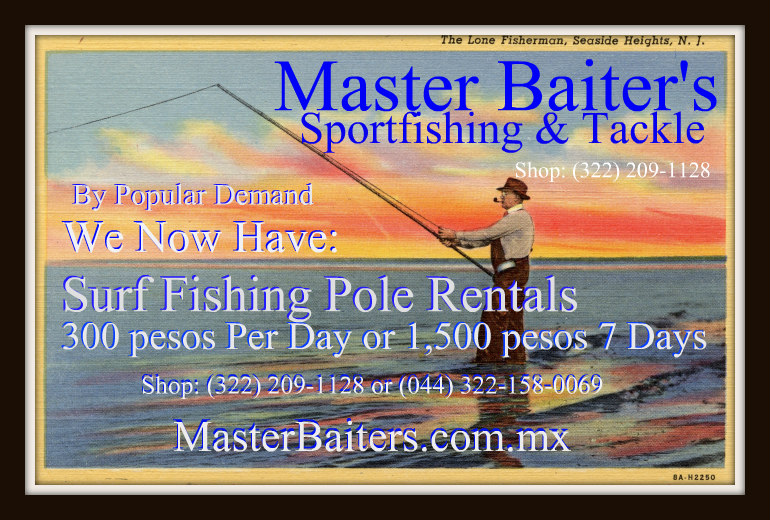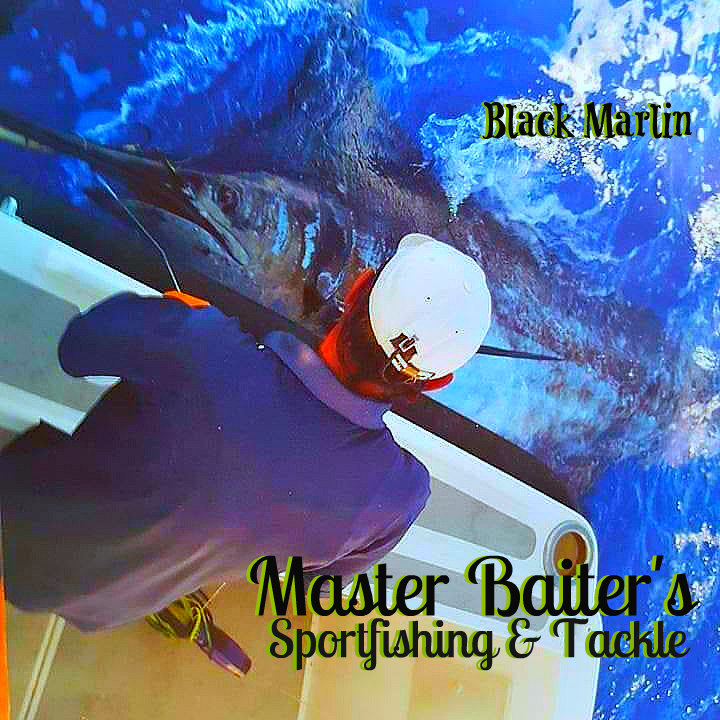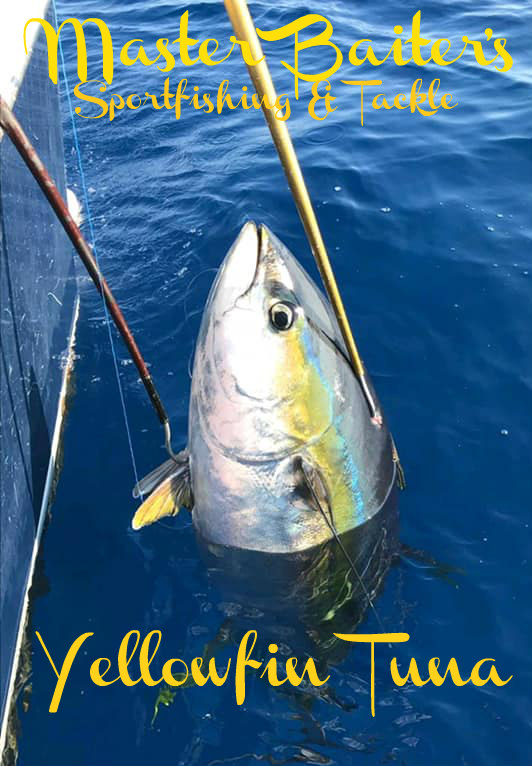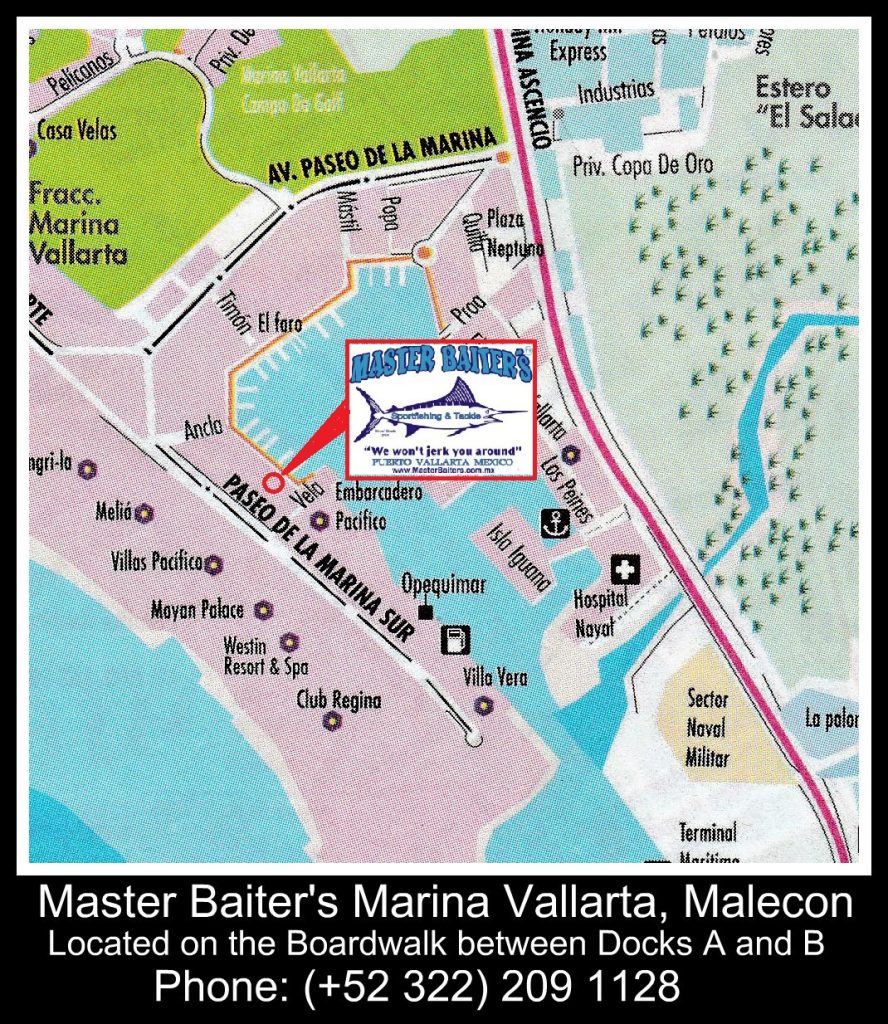Know your fishing equipment, Fluorocarbon vs Monofilament, The pluses and minuses of each
Written by Stan Gabruk of Master’s Sportfishing & Tackle

First, let me say as of the 17th of June Fishing is open in Puerto Vallarta, we are booking fishing trips and tours now! It’s been senseless, but it’s all behind us now… YeHa!
I was talking with Capt. Cesar a few weeks back and I was asking him what Fluorocarbon line was going for, as he replied about two dollars a meter or yard, it sounded correct, but expensive. Monofilament is 75% cheaper. Both have specific good and bad points. But when you walk into a tackle shop and you look around you are in essence in a fish hardware store. Each product has a specific use, it is up to you to decide how it’s all going to be put together hopefully using your local knowledge to guide your way. But what if you don’t know “why” you would want a specific type product? It’s just fishing, right? Fishing line is just fishing line, right? The answer is of course, yes, it’s just fishing, and Leonardo just painted pictures. It all depends on how you decide to look at things.

To continue, years ago I was a Manufacturing Engineer, I know how things are made. To me the expense for these products are very expensive compared to the cost of manufacturing. Extruded plastic is essentially all it is, the formula is naturally the important element here. With so many products on the market saying their product is better for this or that reason, how do you know? Accept the marketing you’ve seen in advertisements? Sadly enough you are flying blind amigos. So I contacted a friend of mine, Clark who is my local china product finding expert, to look into who’s making this sort of product in china. It’s like navigating a forest looking for a specific tree. After going through hundreds of possibilities we found a few we really had confidence in and could answer our questions. Specific answers to specific direct questions. Who better to learn about products of this nature than from a top manufacturer, off the cuff of course. I began to learn about how marketing affects your perceptions and beliefs, thus your purchases. Once you get around the marketing with real information you can learn the inside scoop on these products.
Monofilament fishing line has been around for many, many years. It’s still the most used fishing line on the market and is a great product. “Mono” gives you flexibility, elasticity and strength. But it’s “fat” and per meter takes up more volume than other lines of the same poundage. A great casting line, when it comes to larger fish the “stretch” can actually act as a shock absorber and spring back. As mentioned it’s inexpensive but has a susceptibility to UV rays, and salt water. You need to clean your line constantly when returning to the dock to help with longevity. With larger fish like Marlin or Yellowfin tuna after three larger species like this the line will be stretched and less effective, ultimately breaking. So changing often ensures fish, not excuses. This type of line is good for all species of fish. Again a great product at a fair price.

Fluorocarbon line on the other hand is famous for it’s “invisibility” or rather ability to be almost invisible in the water to the eyes of fish. “Fluoro” is also a stiffer line and therefore more brittle. Not considered a great casting line because of it’s stiffness (in comparison to Mono). It also sinks very well, favorable to jigging. It is more durable than Mono, the sun does affect the line but not to the degree mono is affected. Fluoro doesn’t stretch very well, sacrificing elasticity for strength in this case. Fluro also handles sun and salt water better as well, but you still need to clean your reels at the docks. Now as the Monofilament line is pretty straight forward, in the Fluorocarbon world things are not quite so clear. Which to use?
The answer is naturally both! But these “lines” are still “fat” and take up volume on your reel, enter “Braid” or a nylon type, super strong, super thin fishing line that is not invisible at all. Braid type of nylon fishing line have no need for invisibility. Any line less the leader or ultimate 10 meters can be any combination of options you like. You can get almost double the “yardage” as you would with Mono or Flouro exclusively, that’s the advantage of Braid line. It stands up to sun and salt water well with a superior product life. Many Sports Fishermen and ladies will go with a base line of Braid (takes up less space, less chance of being spooled). Connected to Monofilament which gives you the shock absorption and stretch, followed by ten meters or about 30 ft of Fluorocarbon as leader, tied to lures or hooks of course. Some people will run just Mono and Fluoro leaving the Braid out of the equation with any variance the angler may desire. The example provided is how we would rig for Yellowfin Tuna, Sailfish, Marlin, Dorado Rooster fish and more. A “deep water rig”.
Back to fluorocarbon, the different products on the market make different claims. When looking into selling fluorocarbon in my shop with the Master Baiter’s trade mark, I got quite an education. First fluorocarbon is a very clear product. The product we will be going with looks more or less like fiber optic lines, thinner than many of the other products on the market. I voiced that many products have a milky look to the outside, which turns invisible once it soaks the water up making it’s light refraction level lower. Others have colors, all claim to be invisible in the water. Most fluorocarbon lines are designed to be invisible under six feet deep, others just make claims. I learned i too could have colors, but it increased the fatness of the line by 20% ! to me this is working against yourself. Many will boast the benefits, they may be correct, but we live in perfectly blue water, high visibility blue water like Florida or Hawaii. The grey ocean waters of Southern California may get away with some of this colored line, but the deep water is still blue for that area as well. To me, I prefer the thinner, clearer, more brittle fluorocarbon. To mee everything else seems to go against the goal.

Flyfisherman will use a longer leader of fluorocarbon as it is better around rocks with lures. Doesn’t stretch as much, better for rock hookups.. Sinks quickly, with the invisibility factor, they could run 50 yards or more. Naturally there is a lot more that could be said, the point being know your specific needs, know the product differences and make informed decisions. After learning from the factories that make these products I’ve discovered anything in the fluoro world that is thinner and less visible should be chosen over fancy marketing and even faster talk.
Until next week, don’t forget to kiss your fish…
Web page: www.MasterBaiters.com.mx , Local Phone at: (044) 322 779 7571 or our international number is: 011 52 322 209 1128 10 to 9 local time. #MasterBaitersSportfishing on InstagramMaster Baiter’s ® Sportfishing and Tackle is protected under trade mark law and is the sole property of Stan Gabruk.

https://www.berkley-fishing.com/Berkley-ae-monofilament-vs-fluorocarbon-infographic.html
https://goneoutdoors.com/monofilament-vs-fluorocarbon-fishing-lines-6679201.html

